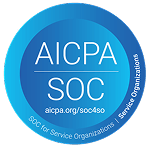Hidden costs of studying abroad in the U.S. (And how to budget for them)
If you’re preparing to study overseas in the U.S., you’ve probably already looked up your tuition, housing and health insurance costs. But what about the less obvious expenses – the ones that don’t show up on the admissions page but can quietly stretch your budget thin?
For many international students, the true cost of studying abroad only becomes clear after arriving. And by then, it’s often too late to adjust.
Planning for the hidden costs of a U.S. education can make the difference between staying on track – or constantly playing financial catch-up. Here’s what to watch for and how to build a realistic budget that works beyond tuition.
What your tuition bill doesn’t include
Even if your tuition is fixed and predictable, your total cost of attendance is not. These are some of the most common expenses international students underestimate or overlook:
Visa and immigration fees
From SEVIS (Student and Exchange Visitor Information System) fees to student visa appointments and travel to your nearest embassy, you could spend several hundred dollars just to get your paperwork approved.
Relocation and setup costs
Flights, airport transport, bedding, groceries, SIM cards and laptops – your first month can easily cost US$1,000–US$2,000 before you even start classes.
Technology and software
Many programs require specific laptops, software licenses or lab fees. Engineering, architecture or design students may face higher tech-related expenses.
Academic extras
Expect costs for books, lab materials, printing and sometimes required fieldwork or conference travel. These costs often aren’t covered by tuition or scholarships.
Professional development
Suiting up for interviews, traveling to networking events or attending conferences can add up fast – especially if you’re looking for a competitive internship or optional practical training (OPT) opportunity.
Healthcare gaps
Even with university insurance, you may face co-pays, uncovered services or high costs for dental and vision care. A simple ER visit can run hundreds of dollars out-of-pocket.
Unpaid internships or job delays
If your internship is unpaid or your OPT takes time to process, you may have months where you’re in the country – but without income.
These realities often push students to consider student loans for foreign students to cover true costs, not just tuition.
Budgeting realistically (and proactively)
To avoid financial stress later, you’ll need to move beyond “survive mode” budgeting for college students and think like a planner. Here’s how:
- Create a line-by-line budget for your first six months, including everything from groceries to security deposits.
- Build in a monthly buffer for surprise expenses – US$100–US$200 is a good target.
- Use average prices for your city – not national estimates. Living in New York is very different from living in Iowa.
- Ask your university if there’s an estimated “cost of attendance” breakdown beyond just tuition.
- Map out OPT timelines so you know when income might pause or start late after graduation.
For these gaps, exploring private international student loans can bridge the difference between “just enough” and “enough to thrive.”
Financial tools that fill the gap
Even the best-laid budgets can fall short when an internship opportunity pops up in another city, or when unexpected health or tech expenses hit mid-semester. That’s where flexible funding can help – without derailing your education plans.
MPOWER Financing supports international students with:
- No-cosigner student loans for approved U.S. and Canadian universities
- International student loan amounts from US$2,001 to US$100,000, covering not just tuition but also living and academic expenses in the U.S. and all university-invoiced expenses in Canada
- Path2Success, a free support platform with tools to help you job search, budget for OPT and navigate career transitions
- Fixed, inflation-proof interest rates and no hidden fees, so you can plan with clarity
You can also combine MPOWER loans with international scholarships or part-time income – giving you more freedom to handle unplanned costs while focusing on what matters most: your studies.
Studying smart means budgeting smart
A master’s degree abroad is one of the most powerful investments you can make – but it’s not just about tuition. It’s about managing the full picture of student life: visas, health, tech, travel, career and daily living.
Because success abroad isn’t just about getting in – it’s about having the financial space to thrive once you arrive.

